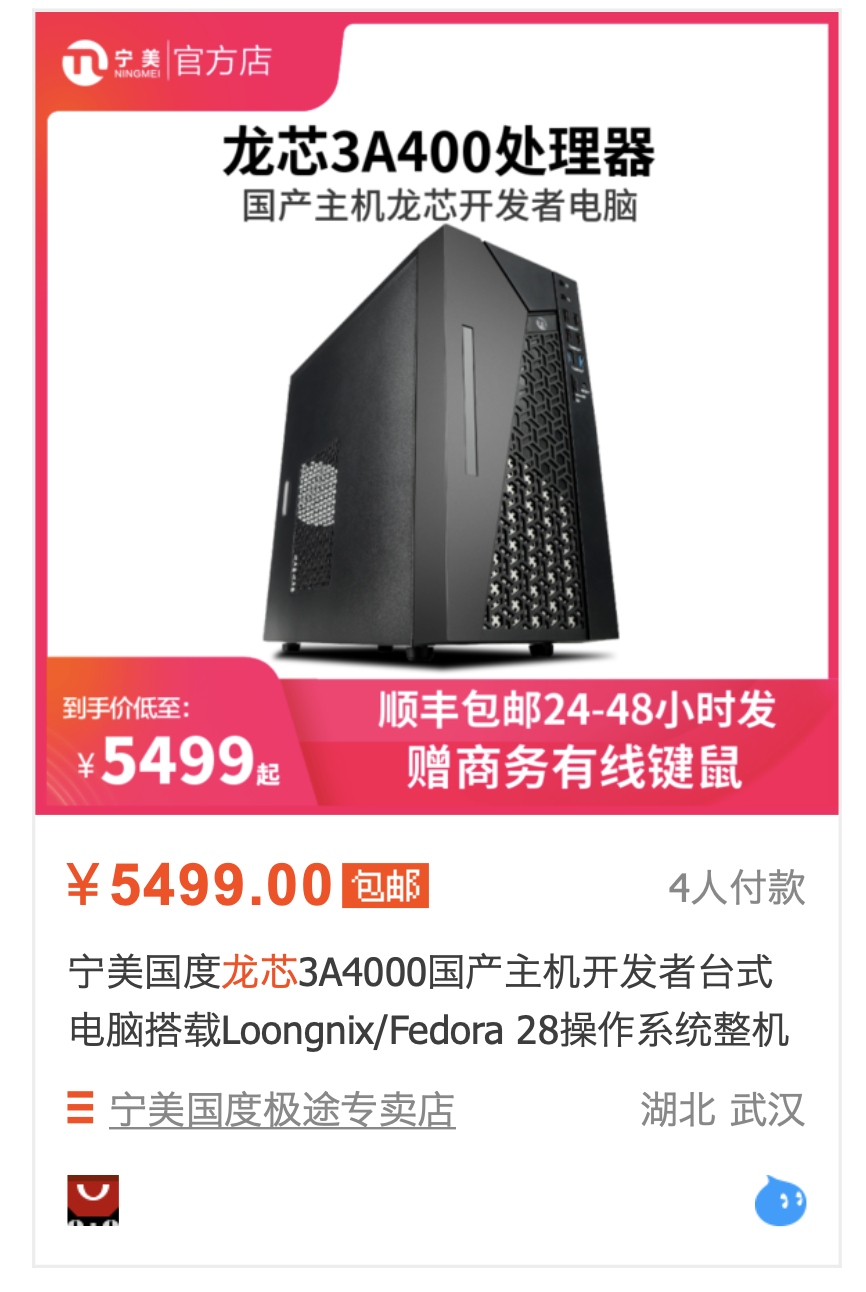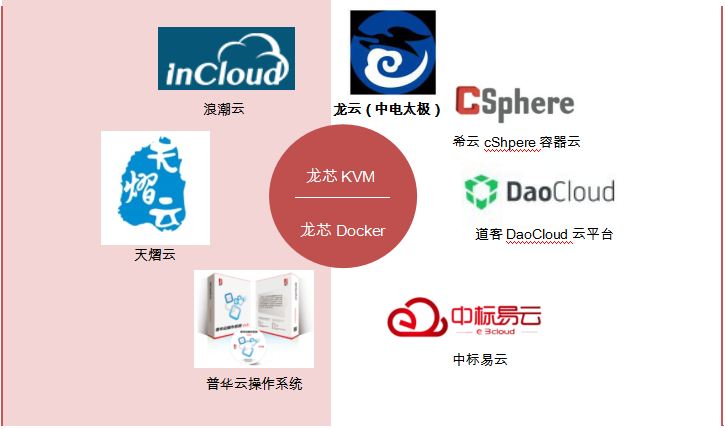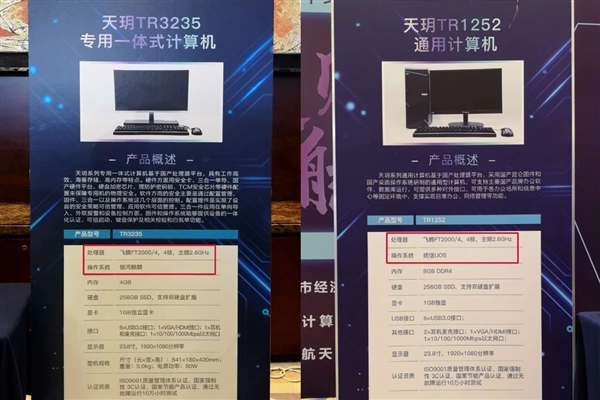I bet you haven't even heard of some. Let's start with Loongson.
Once again, I want to note - this is a 100% domestic processor. Unlike the same subsidiary Huawei Hisilicon, which orders its Kirin and Kunpeng processors from third-party outsourcers.
So Loongson 3A4000 / 3B4000. The official announcement of its release on sale was released on December 24, 2019. The clock speed is 2.0 GHZ, 4 cores, in the synthetic test he scored 128 gflops, production technology - 28 Nm. Detailed specifications can be found on the manufacturer’s website .
Based on this processor, desktop consumer computers are already sold . You can put there either their Loongnix distribution or any other MIPS-compatible system. Let's talk about the OS at the end.

There were many reviews, you can watch the video of test use at the link.
At the end of 2020, the release of the new 3A5000 processor was announced, which will be produced using 12 Nm technology and will finally allow it to catch up with the rest.
Loongson KVM and Loongson Docker Server Processors are used in many cloud platforms.

Next comes Phytium. The last FT-2000/4 processor presented by them on September 21, 2019 is a 4-core processor with a clock frequency of 2.6-3.0 GHz, created using 16 Nm production technology, architecture - ARM. Detailed specifications are also on the manufacturer's website .
The first home computer based on this processor was introduced on June 10, 2020, has not yet been put into free sale.

And finally, Sunway. They mainly specialize in processors for supercomputers, but they also have desktop solutions. Sunway1621 - the same 4-core processor, manufactured using 28 nm technology with a clock speed of 2 GHz. Details
This manufacturer is notable for the fact that he develops his processors on his SW64 architecture. And your own microprocessor architecture developed from scratch - it’s not a sneezed cat for you.
All of this is supposed to be made to work on UOS (Fallout fans were jolted). You can download it for different architectures (including SW64) on the official website . This is a system based on the Chinese Deepin Linux distribution.
Huawei is developing its own operating system (the first, not based on Linux \ Unix) - Harmony OS, the first product on it is Huawei Smart Vision V65. After the release of version 2.0, it is planned to install it on smartphones and other devices of the company.
In conclusion, I can say that the events of recent years have greatly pushed this industry